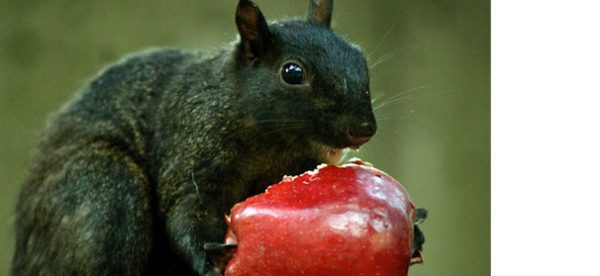

Dec 3, 2012Booming squirrel population a threat to fruit
A side effect of the strange weather that battered much of the North American fruit industry this season has been damage from wildlife. Growers in the Northeast are seeing a lot of damage from squirrels this season, said Paul Curtis, an Extension wildlife specialist with Cornell University.
“Apparently, there is a gray squirrel population eruption underway in the Hudson Valley and Lake Champlain areas, that may have been caused by an excellent acorn crop last year,” Curtis said. “Red squirrels probably also benefited from the acorns last year, and their numbers are likely high, too.”
The cause for the excessive damage this season is the fault of those same acorns. The warm spring, followed by frosts, followed by an extremely dry summer, caused oak trees to produce fewer acorns.
“Squirrels could be looking for alternative food sources, and like deer and voles, squirrels love apples,” Curtis said.
Gray squirrels, like many other species, experience population cycles every five to 10 years, according to a report published by Clemson University. The report states that habitat changes, such as a booming acorn crop last season, can trigger population explosions. These population explosions often are accompanied by massive migrations, which result in higher mortality to the squirrels. This can also trigger higher-than-expected crop damage, as the populations are on the move.
Control measures
Squirrels are rodents, so the obvious control measure would be rodenticides. In some cases, however, those would be illegal for killing squirrels, Curtis said. In places where the use of rodenticides is restricted or GAP practices won’t allow their use, other measures must be used.
According to Jeffery Jackson, from the Internet Center for Wildlife Damage Management, growers can prevent squirrels from climbing isolated trees by encircling them with a 2-foot-wide collar of metal 6 feet off the ground. Growers would attach the metal ring using encircling wires held together with springs to allow for tree growth.
Jackson said growers could prevent squirrels from traveling on trellis wires by installing sections of lightweight, 2- to 3-inch-diameter plastic plumbing pipe.
“Slit the pipe lengthwise, spread it open, and place it over the wire,” he said. “The pipe will rotate on the wire and cause traveling squirrels to tumble.”
Shooting and hunting, if in a rural farm setting without homes nearby, can work well, as well as trapping. Killing squirrels that cause fruit damage is really the only alternative, Curtis said. Other control measures often don’t do enough.
If squirrel numbers are very high, shooting (hunting) and trapping control methods may have limited effectiveness. The population densities are often just too high for those strategies to work, Curtis said.
“The only good news is that these squirrel eruptions are short-lived, and the population usually crashes and is lower for several years after the event,” he said.
By Derrek Sigler, Assistant Editor














